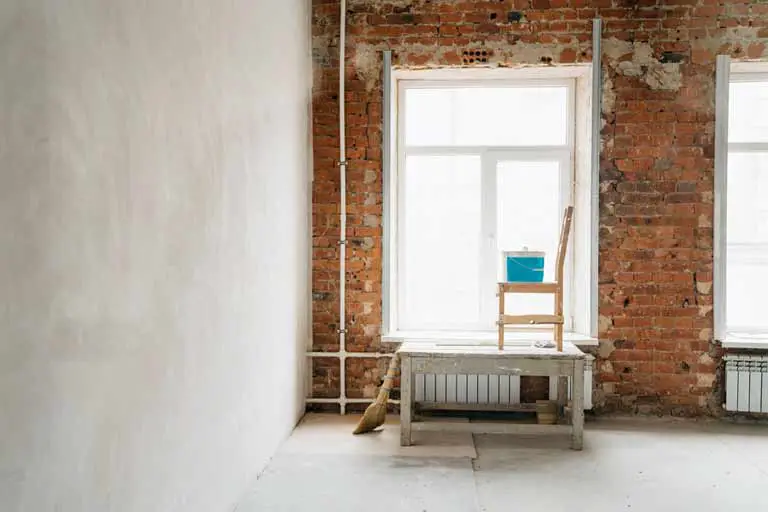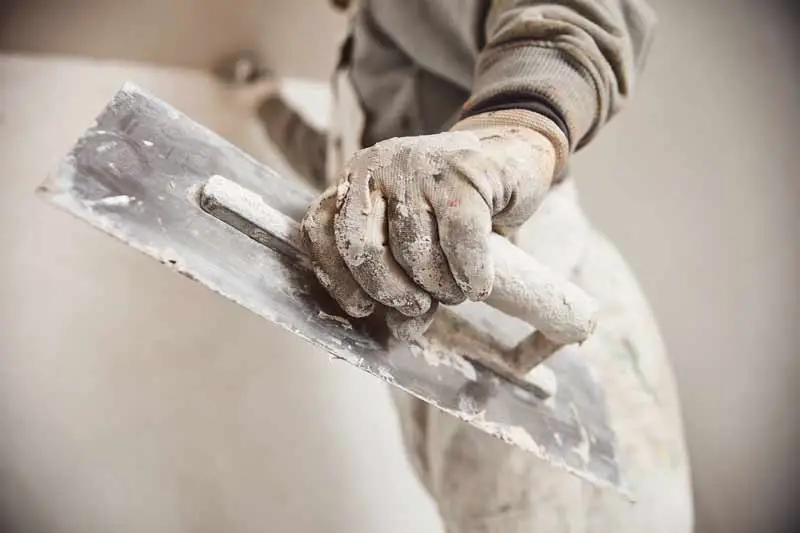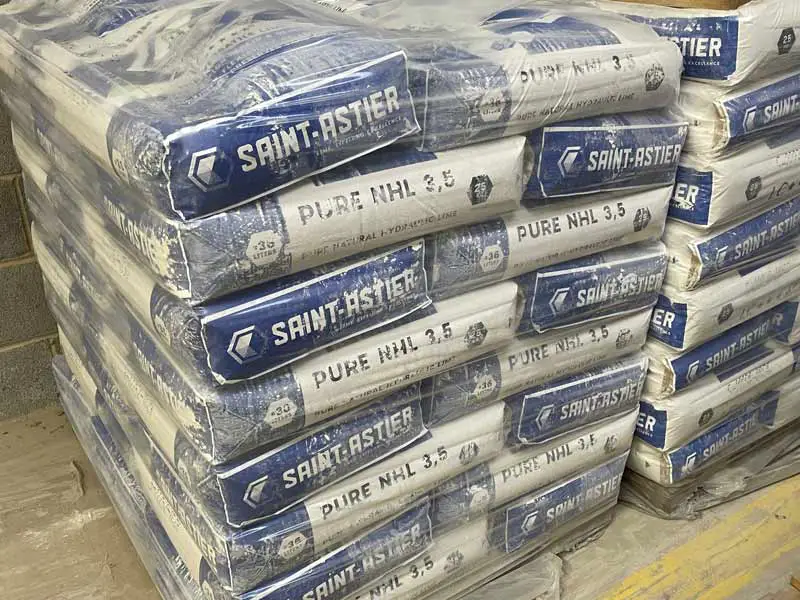
Lime plaster has been used as a building material for centuries. It offers advantages and disadvantages worth considering for your next construction or renovation project. Being an eco-friendly option, lime plaster is a top choice for those concerned about their building materials’ environmental impact.
Regarding its advantages, lime plaster offers durability and flexibility as it sets. It’s highly permeable, allowing for moisture diffusion and evaporation. This prevents moisture-related problems, such as damp and mould, from affecting the structure. Furthermore, it’s less affected by water and maintains its structural integrity better than alternative materials like clay or gypsum plaster.
On the other hand, some disadvantages of lime plaster include its longer setting time and potential difficulty in application compared to more modern materials. However, by weighing these pros and cons, you can decide whether lime plaster is the best choice for your construction or restoration project.
Advantages of Lime Plaster
Flexibility and Breathability
Lime plaster is a highly flexible and permeable material. Making it perfect for covering a variety of surfaces such as wood, stone, and brick. Its flexibility means it can accommodate movement within the structure without cracking, ensuring a long-lasting and visually appealing finish.
Lime plaster is also breathable, allowing moisture to evaporate and helping maintain healthy indoor air quality within your home. This breathable material is especially advantageous in old buildings, which require a good balance of moisture control to prevent damp problems.
Durability and Longevity
Lime plaster provides excellent durability and longevity, outperforming many alternative materials in terms of resistance to wear. When mixed with fibres like hair, lime plaster becomes even more resilient, reducing the risk of shrinkage and cracking.
Furthermore, lime within the plaster can reabsorb some of the carbon dioxide it emits during production. Allowing it to harden and become more durable over time. With proper maintenance, you can expect your lime plaster to have a long-lasting life, preserving the character and beauty of your home for generations to come.
Moisture and Dampness Control
A significant advantage of lime plaster is its ability to control moisture and dampness within a building. The breathable nature of lime plaster enables it to absorb excess moisture, reducing the risk of mould growth and improving overall indoor air quality.
In addition, lime plaster is less affected by water than alternatives such as clay plaster, gypsum, and cement plaster, meaning it won’t dry out or dissolve when exposed to moisture. This makes lime plaster an excellent choice when waterproofing properties are required, ensuring the longevity of your home and its structural stability.
Eco-Friendly
Choosing lime plaster for your home has several environmental benefits. Firstly, the manufacturing process of lime plaster produces lower carbon emissions compared to cement-based plasters. Additionally, its natural breathability means that less energy is required to regulate the temperature and humidity within your home, saving you money on heating and cooling bills while also reducing your home’s environmental impact.
Using lime plaster is a responsible and environmentally friendly option that conserves resources and helps preserve older buildings’ unique heritage and character.
Related article: Is Lime Plaster And Mortar Sustainable?

Disadvantages of Lime Plaster
Cracking and Shrinkage
Lime plaster can be prone to cracking and shrinkage when curing. This is especially true for non-hydraulic lime, which requires a longer drying period. As the plaster dries, evaporation can cause it to contract, leading to cracks in the surface.
Usually, these cracks can be avoided by regularly misting the surface with water for the first couple of weeks after application. Any good lime plasterer will either do this for you or give you guidelines on properly caring for the plaster as it sets.
If the plaster has impurities or inconsistencies, cracking can also occur. While lime plaster is less brittle than gypsum plaster, it still requires proper application techniques to avoid such issues.
Application Difficulties
Working with lime plaster can be more time-consuming and difficult compared to cement-based plasters. The application process typically requires a scratch coat and one or more additional coats. Each coat must be properly timed and applied for the desired texture and appearance.
Lime plaster also requires more precise measurements and mixing to ensure a consistent composition. Mistakes in the proportions or preparation can make it harder to work with and may affect its final appearance and performance.
High Initial Cost
Although lime-based plaster has a lower environmental impact and is carbon neutral, it can initially be more expensive than cement plasters. The cost of the materials and the labour involved in preparing and applying the plaster can be higher than other building materials. Additionally, the types of paint and finishes that are compatible with lime plaster may be fewer than those available for cement plasters.
By acknowledging the disadvantages of lime plaster, you can make a more informed decision when choosing the most suitable plaster for your building project. Ensuring that the plaster is applied correctly, using the appropriate types of lime and mixtures, and considering the long-term benefits can help mitigate the challenges commonly associated with lime plaster.
Types of Lime Plaster
When considering lime plaster, it’s crucial to understand the different types available, as each has its distinct properties and applications. This section will explore two main types: Non-Hydraulic Lime and Hydraulic Lime.
Non-Hydraulic Lime
Non-Hydraulic Lime, also known as air lime, slaked lime, lime putty, fat lime or high calcium lime, is made from quicklime, which undergoes a process called slaking. This process involves mixing quicklime with water, resulting in the formation of slaked lime or hydrated lime. As non-hydraulic lime sets, it will harden by absorbing carbon dioxide from the air, forming a rock-like substance. This process is called carbonation.
The lime putty, made via slaking, will usually be matured over a period of 1-3 months. Afterwards, it can be used to make lime mortars, renders and plasters with sand and other aggregates. The advantages of non-hydraulic lime include its flexibility, breathability, and compatibility with old buildings and new eco-builds. It is generally more eco-friendly and less likely to crack than cement-based materials.
However, non-hydraulic lime takes longer to set and achieve its full strength. This means it requires more labour during the aftercare phase, where it cannot dry too quickly. This can sometimes lead to higher labour costs when compared to hydraulic lime plasters. When using non-hydraulic lime, it is essential to consider if the additional setting time and possible increased labour costs are acceptable trade-offs for your specific project.
Hydraulic Lime
Hydraulic Lime is derived from limestone containing impurities such as clay, silica, or other minerals. When heated in a kiln, these impurities become activated. They react with water to form a set called hydrolysis. This is generally a quicker and harder set compared to non-hydraulic limes. Hydraulic lime is available in various degrees of strength (referred to as ‘feeble’ NHL 2, ‘moderate’ NHL 3.5, and ’eminent’ NHL 5). The numbers are a rough guide of compressive strength, larger being a harder set. It should be noted the higher the strength of mortar and plaster, the less breathability and flexibility.
Hydraulic lime sets by undergoing a chemical reaction with water. It offers faster setting times and higher durability, making it more suitable for external applications exposed to weathering elements. Lime mortar and lime render made with hydraulic lime provide improved water resistance and durability compared to non-hydraulic lime.
However, hydraulic lime is less breathable and flexible than non-hydraulic lime. The additional strength may not be necessary for some projects, particularly those involving older buildings where compatibility with original materials might be more important. In these cases, a non-hydraulic lime should almost always be used.
In summary, it is essential to understand the differences between non-hydraulic and hydraulic lime when choosing the appropriate lime plaster for your project. By considering the setting time, water resistance, breathability, and flexibility, you can make an informed decision and achieve the best results for your needs.

Related article: The Differences Between Lime Plaster, Mortar and Render
Components and Mixing of Lime Plaster
Ingredients
Lime plaster is a mix of lime, sand, and water. The main component, lime, is derived from limestone or other calcium-rich sources. The lime can either be non-hydraulic or hydraulic. Non-hydraulic lime relies on carbonation, whilst hydraulic lime sets by a chemical reaction with water. Sand is added to the mix for texture and stability; water is needed to make the material workable.
Proportions
The proportion of ingredients plays a vital role in the functionality and strength of the lime plaster. A typical ratio of 1:2.5 or 1:2 – lime to aggregate is commonly used for lime plaster mixtures. However, it is crucial to remember that the exact proportion of lime, sand, and water may need adjustment depending on factors like the type of lime used, the surface on which the plaster is applied, and the desired finish.
Lime Plaster in Old and Historic Buildings
Lime plaster has been a key building material in old and historic buildings for centuries. In these structures, lime plaster effectively addresses common issues such as moisture and damp problems, often prevalent in older buildings.
One of the main benefits of lime plaster in aged structures is its ability to maintain a breathable environment. As a permeable material, lime plaster allows moisture to diffuse and evaporate, preventing the buildup of dampness in walls and ceilings. This characteristic can help you preserve the structural integrity of the building while minimising damp problems.
Also, lime plaster is a flexible material that can accommodate movements, making it suitable for older buildings with slightly shifting foundations. As a result, lime plaster can prevent the formation of cracks that could otherwise compromise the building’s stability.
Furthermore, the process of creating lime plaster is considered environmentally friendly as it yields a carbon-neutral product. Embodied in its porous nature, lime plaster offers ample thermal insulation with its large air-filled pores. This can contribute to creating a comfortable living environment within the space.
Lime plaster’s adaptability, breathability, and moisture management capabilities make it an ideal choice when restoring or preserving old and historic buildings. Remember that as a building material, this plaster type provides a range of advantages vital for maintaining the integrity and longevity of the structure whilst also being a more sustainable choice.
Related article: What Render is Best for Old Houses? Lime Render Explored
Key Takeaways
In conclusion, lime plaster is a versatile and eco-friendly building material with several advantages, including flexibility, breathability, durability, and moisture control. However, it also has disadvantages, such as longer setting time, potential cracking and shrinkage, and higher initial costs.
When choosing lime plaster, it’s essential to consider the type of lime, mixing proportions, and the specific needs of your project. Lime plaster is particularly suitable for old and historic buildings, where it can help preserve the structural integrity and character of the structure while being a sustainable option.
Overall, lime plaster is a viable option for construction and renovation projects. You can make an informed decision for your specific needs by weighing up its pros and cons.

